This telescope was moved from the RGO site at Herstmonceux in 1979 and after re-engineering work done at Grubb Parsons in Newcastle was the first to come into operation on La Palma in 1983. The large building was designed for the requirement at the time to accommodate the f/50 Coudé focus with two optics laboratories on the second floor, but this was never commissioned.
The mechanical, electrical and electronics workshops are also housed in this building along with offices for staff. However, there were always problems with heat rising from the offices into the dome so these days most staff have office space in the WHT annex or work at the ING sea level office in Santa Cruz.
I found it quite difficult at first navigating around the building as the stairwells at the east and west entrances are very similar not to mention the vast amount of heat lock doors one has to pass through. Its quite a maze inside, but I soon got used to it!
The INT is an equatorial fork mounted telescope and can work at f/3.29 (corrected prime focus) or f/15 at Cassegrain. The telescope weighs 90 tonnes and the polar axis disc floats on a film of oil forced under pressure through a series of pads mounted below and behind the disc. The telescope is so perfectly balanced in that if the free motion clamps were released, it is possible for a single person to move the structure by hand... I did it once when we thought there were problems with a bearing.
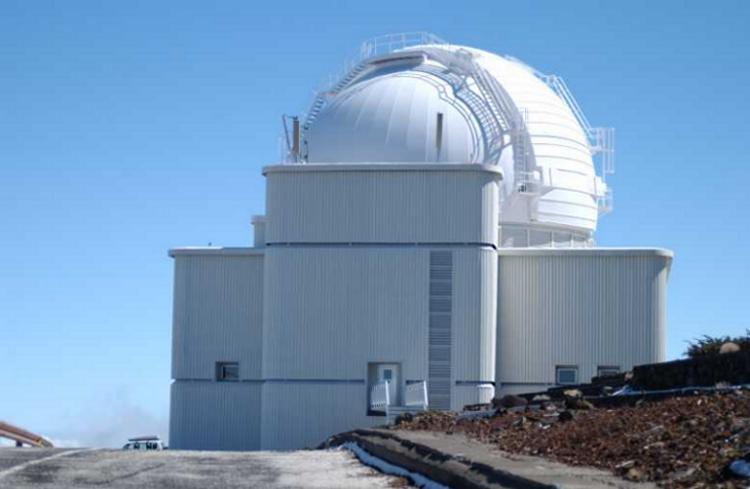
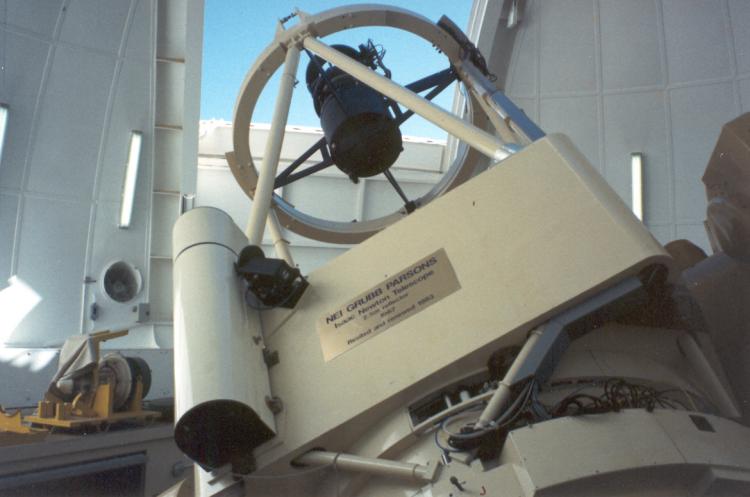
The INT in 1986 fitted with the original prime focus CCD camera
The plaque reads: NEI GRUBB PARSONS, Isaac Newton Telescope, 2.5m reflector, 1967, Resited and renewed 1983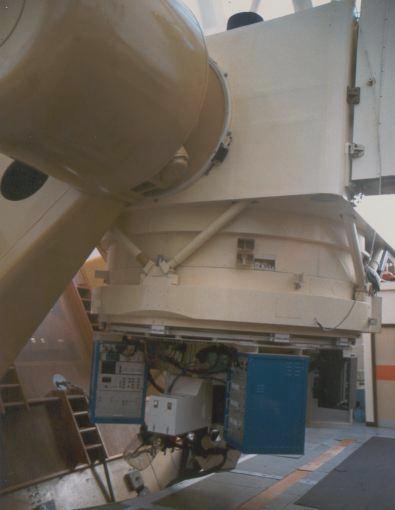
The Cassegrain instrument configuration in the 1980's.
The blue racks contained the power supplies and controller for the Image Photon Counting System (IPCS).This detector was certainly the most complex piece of equipment we had to maintain. If it hadn't been used for a time, it required a 'bake out' period of several hours when the temperature of the water circulating in the cooling jacket around the image intensifier tube was raised to dry out any dampness. As the tube operated with a 40 kilovolt supply this was important to prevent arcing.
Bringing up this instrument at the start of an observing run was always a nerve racking experience as problems sometimes occurred. When photon events seen on a small display monitor started to appear as the voltage ramped up, it gave one confidence that all was working.
The IPCS was eventually phased out when CCD's that could work efficiently at blue wavelengths were introduced, but I doubt if even today they perform as well as the IPCS did as a blue light detector.
This image also shows the infamous open well below the step ladder on the polar disc. The story goes that a support astronomer fell into it one night! After the incident the well was closed off and the entire observing floor wood panelled.
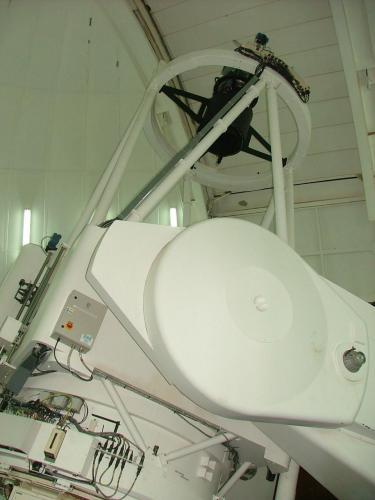
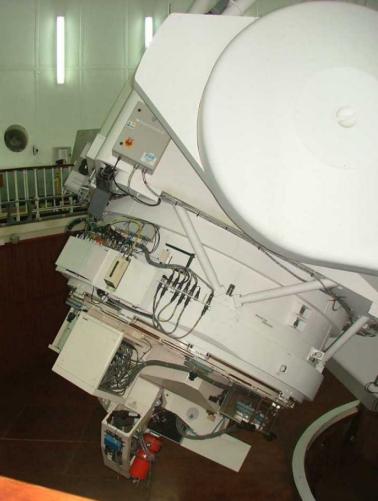
The Isaac Newton Telescope in 2005
A few years ago the telescope was re-painted and has lost its 'two tone' appearance as can be seen in the 1986 image above. For more than 2 years it has been operating using only the Wide Field Camera at prime focus, but later this year the Cassegrain Spectrograph (IDS) as seen in the image to the right will be offered again as a common user instrument.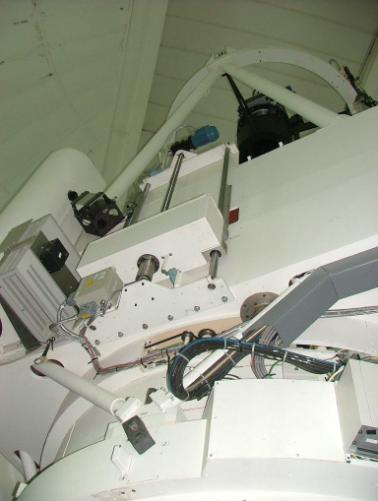
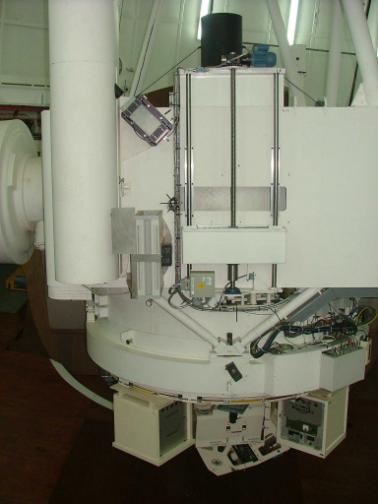
Showing the motorised counterweight system
I suggested this as an idea in the mid 1990's to the mechanical group and it was accepted and built. Previously, electronics racks from the Cassegrain turntable were removed and heavy weight frames fitted when changing to prime focus imaging. Now its simply the case of moving the weight boxes up or down depending on whether the secondary mirror or wide field camera is fitted. This also has the advantage of halving the time to do the instrument change to prime focus plus the Cassegrain instruments are always available to allow spectrograph setups or engineering work to be carried out during prime focus observing.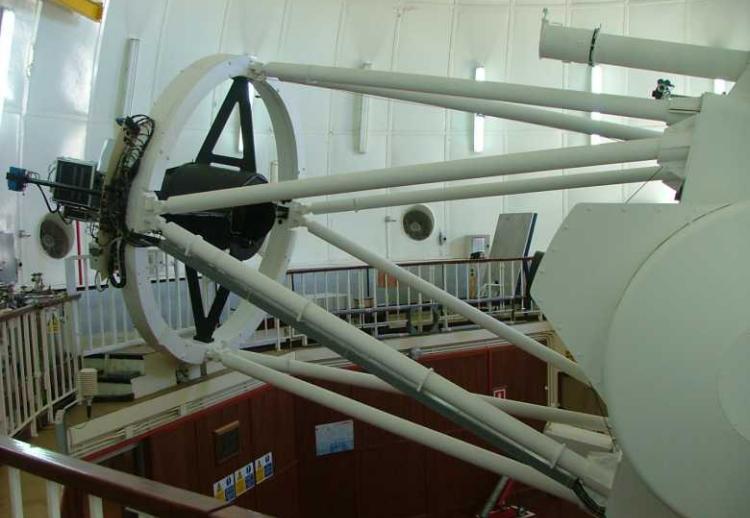
The telescope at the Access Park position
During the day when observing at prime focus, the telescope is left in this position to allow the CCD camera cryostat to be filled with liquid nitrogen and to change the filters within the Wide Field Camera if needed.
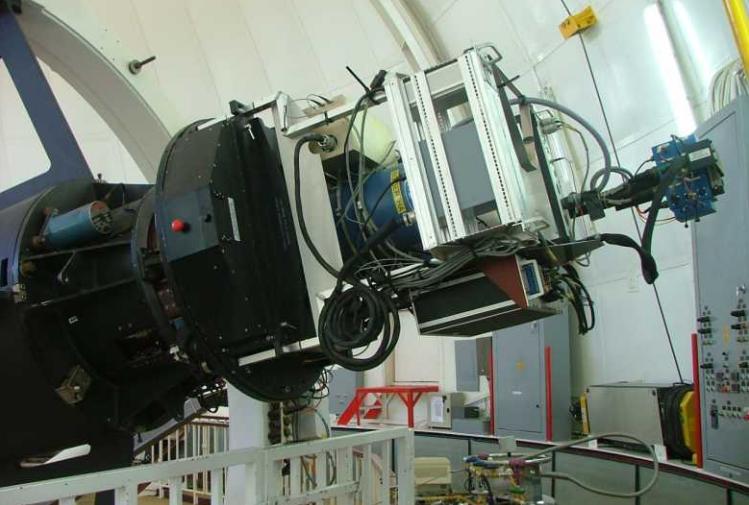
THE INT WIDE FIELD CAMERA (In use since 1997)
The CCD camera consists of four EEV 2K x 4K chips mounted in the blue cryostat and servoed at a temperature of 153oK (-120oC) using liquid nitrogen to minimise thermal noise. The WFC is fitted onto the original prime focus rotator, but in practice this never needs to be moved. A large format CCD chip used for autoguiding is mounted alongside the science chips and can usually detect a suitable guide star. Click here for more information on the wide field camera and some nice images.Click here to have a look around the INT control room.

